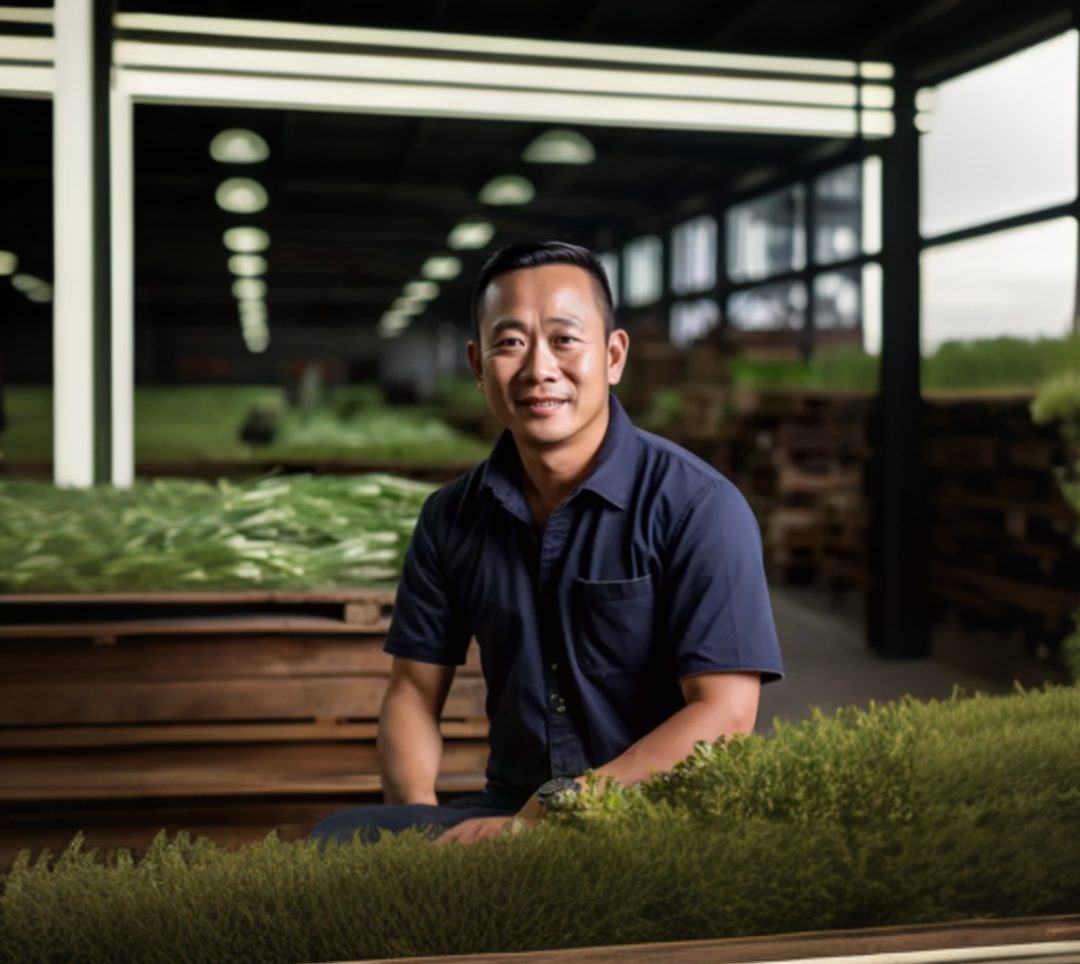The Araceae genus refers to a diverse family of plants that includes many popular houseplants and ornamentals. Some key features of the Araceae family include a spadix and spathe, simple leaves with netted veins, and specialized flowers. In this article, we’ll take a closer look at 5 major groups within the Araceae genus.
Anthuriums
Overview
Anthuriums are a popular group of ornamental plants admired for their long-lasting brightly colored flower spathes. There are over 1,000 species of Anthurium that originate from tropical regions of Central and South America. These hardy plants thrive as houseplants and cut flowers.
Some popular Anthurium varieties include:
- Anthurium andraeanum – Characterized by bright red spathes and dark green, heart-shaped leaves
- Anthurium scherzerianum – Pale pink spathes with ruffled edges
- Anthurium crystallinum – Velvety white or green spathes
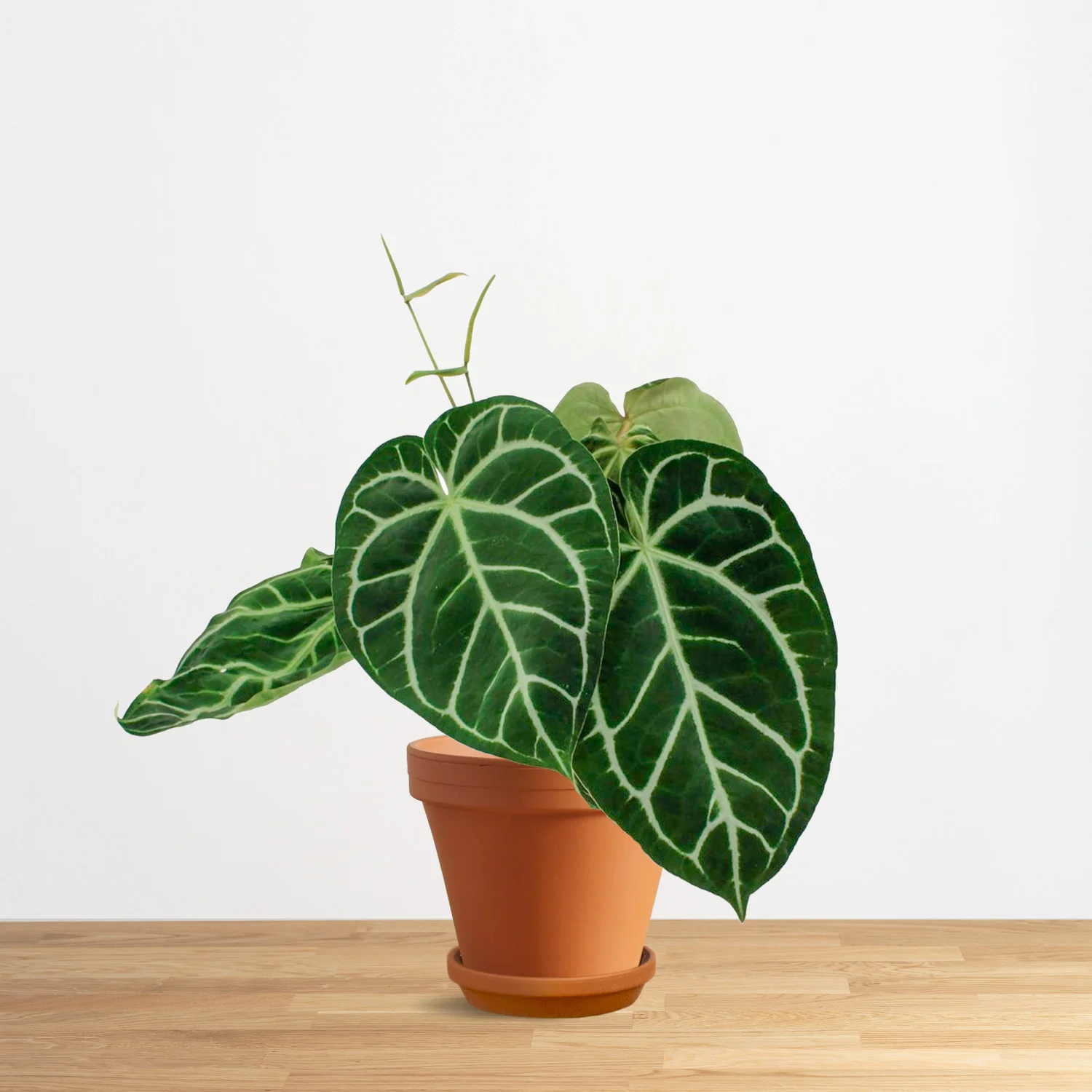
Growing Conditions
Anthuriums grow best in well-draining, porous potting mixes with plenty of bark or perlite added. They require high humidity levels between 60-90%. Light is another key factor. While they grow well in bright, indirect light, direct hot sunlight will scorch their leaves.
Ideal temperatures range between 70-90° F during the day and no lower than 60° F at night. Frequent feeding with a balanced houseplant fertilizer will keep Anthuriums looking their best. Take care not to overwater them as soggy soil leads to root rot.
Philodendrons
Overview
There are over 400 species of Philodendron varying greatly in size, leaf shape, and growth habit. Philodendrons are admired for their impressive foliage and versatile nature. They thrive as hardy houseplants or in tropical outdoor gardens.
Some popular Philodendron species include:
- Philodendron hederaceum: Fast-growing heart-shaped leaves trailing or climbing
- Philodendron bipinnatifidum: Lacy, tree-like leaves, can grow quite large
- Philodendron erubescens: Oblong green leaves with red stems
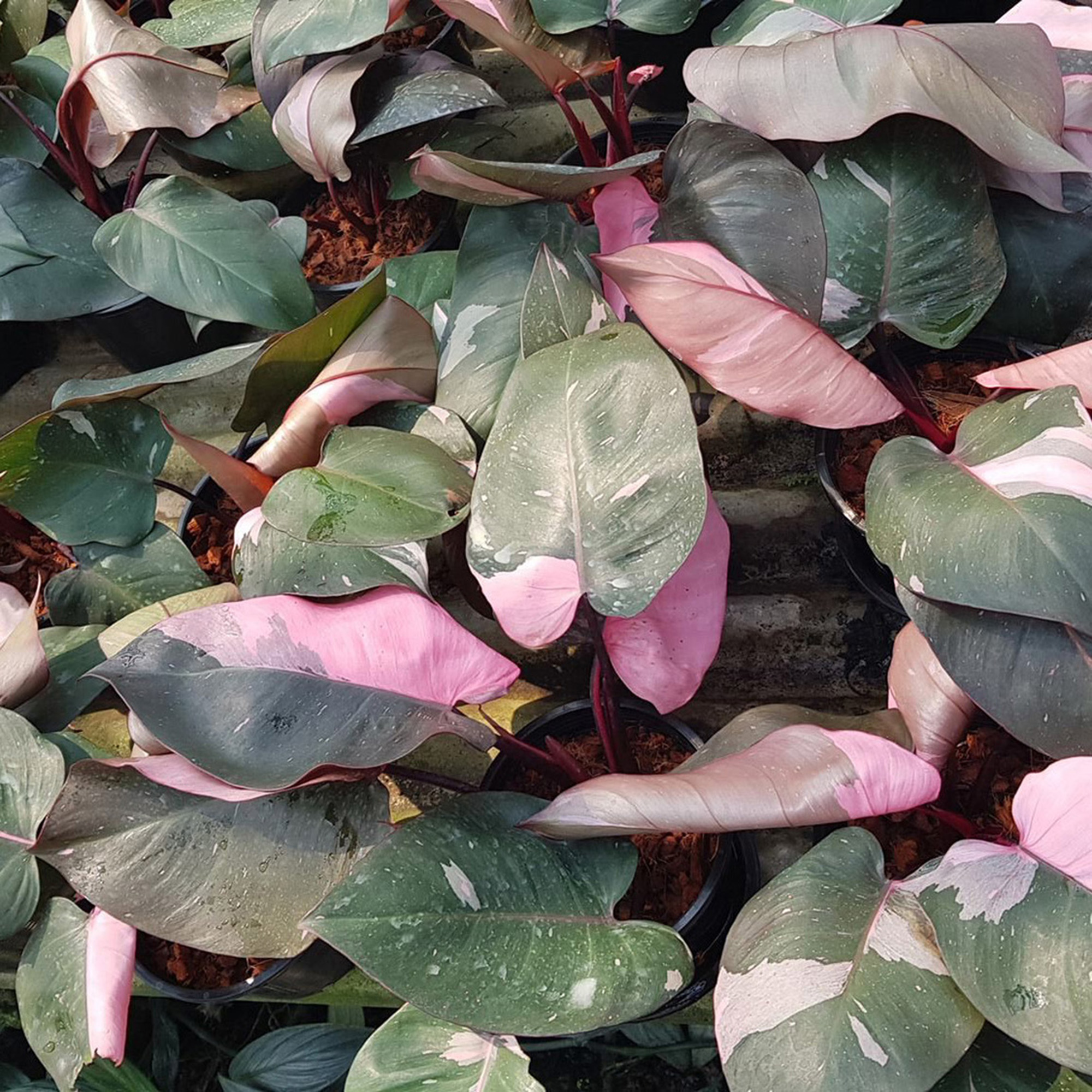
List of the most sought after rare aroids in 2023
Growing Conditions
Philodendrons prefer bright, indirect sunlight. Too much sun will fade and dry out their foliage. Warm temperatures and average home humidity suit them well. Allow the top inch of soil to dry out between waterings.
Most Philodendron species are vining plants that look stunning in hanging baskets or trained up supports and trellises. Well-draining, loose potting soil amended with perlite encourages healthy root development. Apply a balanced liquid fertilizer every 2-4 weeks during the growing season for lush growth.
Spathiphyllum
Overview
Commonly called Peace Lilies, Spathiphyllums are a popular houseplant gifted in floral arrangements. Native to tropical regions of the Americas, they produce lush green foliage and distinctive white flower spathes that resemble calla lilies.
There are around 40 species of Spathiphyllum. Some popular varieties include:
- Spathiphyllum wallisii: Dark green leaves with large white spathes
- Spathiphyllum Sensation: Variegated white and green foliage
- Spathiphyllum Supreme: Miniature variety perfect for tabletops
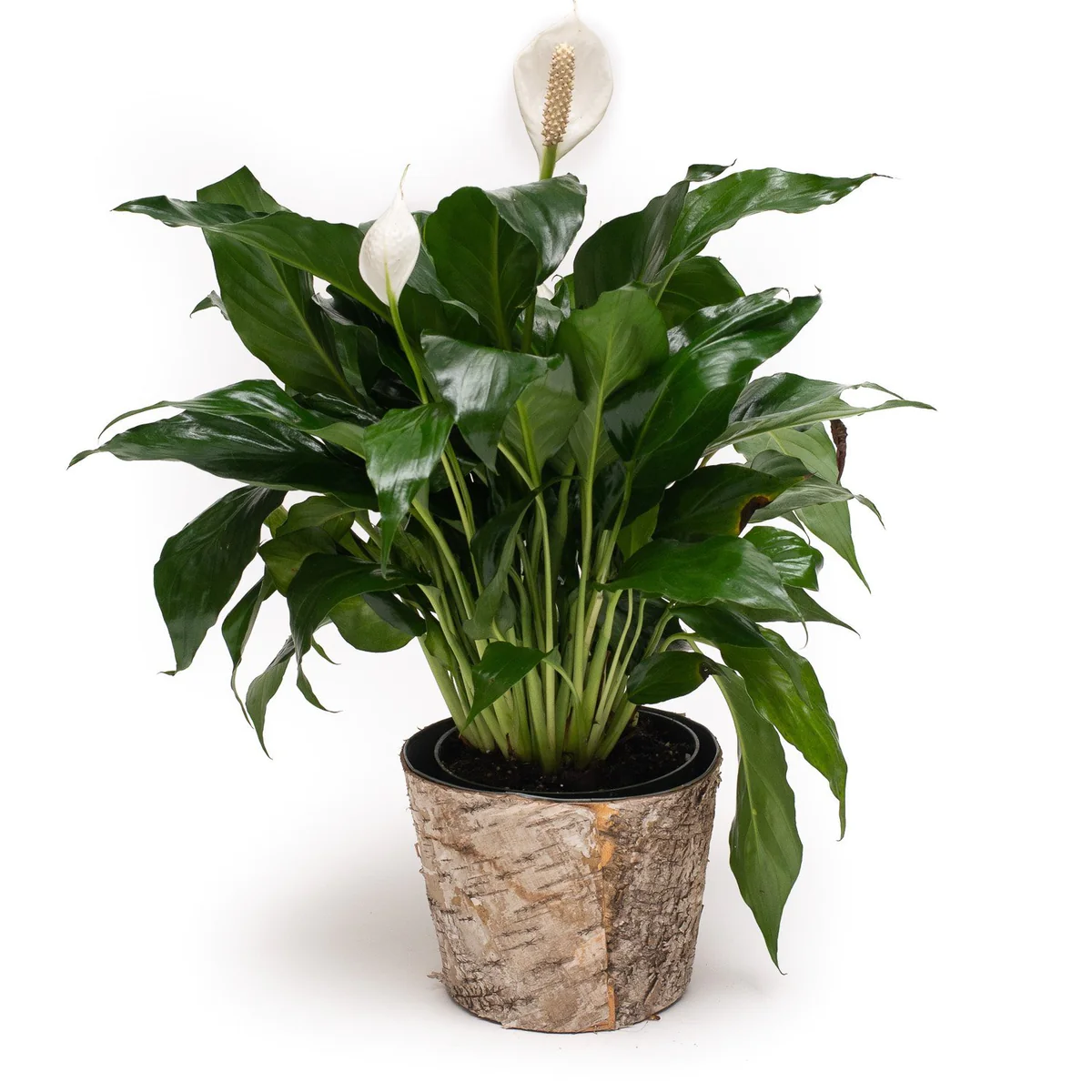
Growing Conditions
Spathiphyllums thrive in bright, filtered light indoors. While they tolerate low light conditions, they are less likely to bloom without sufficient light. They flourish in temperatures between 65-80° F and average household humidity.
Keep the soil consistently moist but not waterlogged. Let the top inch dry out before watering again. Apply a balanced liquid fertilizer every 2-4 weeks during spring and summer. To trigger flowering, allow plants to become slightly rootbound and provide a winter rest period with reduced watering.
Aglaonema
Overview
Native to tropical and subtropical Asia, Aglaonemas are visually striking houseplants with colorful variegated leaves. They are easy to grow, tolerant of neglect, and well-suited to modern home and office environments.
There are 21 species of Aglaonema with infinite cultivars. Some popular varieties include:
- Aglaonema Silver Queen: Gray-green leaves edged in white
- Aglaonema Maria: Pale gray-green leaves splashed with dark green
- Aglaonema Crete: Green leaves variegated with pink and red
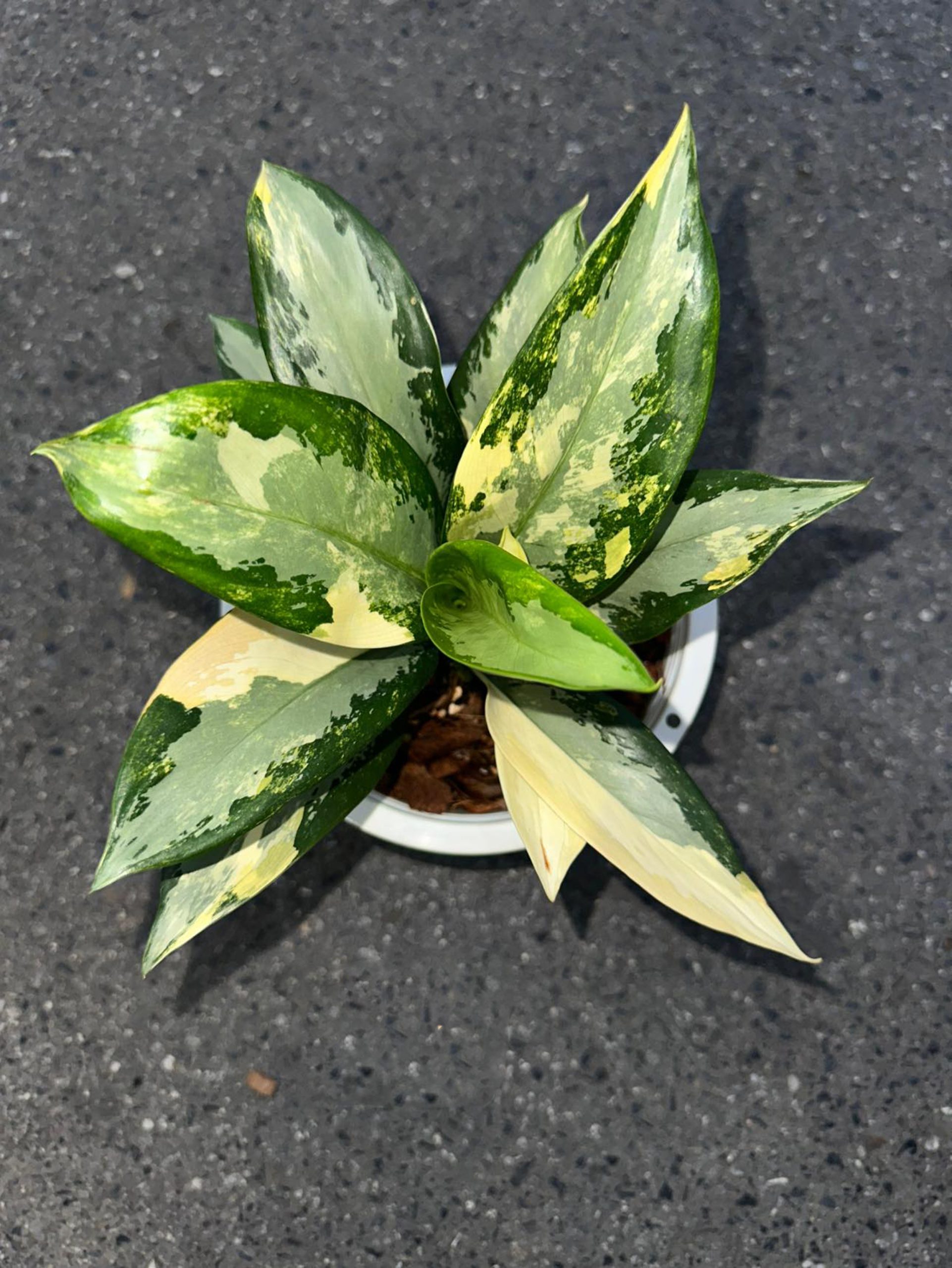
Growing Conditions
Aglaonemas thrive in medium to low indirect light. While tolerant of deep shade, more light encourages faster growth and more intense leaf colors. Average room temperatures and humidity suit them well.
Allow the top inch of soil dry out between waterings. These plants dislike soggy soils leading to root rot. Apply a balanced houseplant fertilizer monthly during the growing season. To keep plants full and promote new growth, divide overgrown clumps every 2-3 years.
Caladium
Overview
Caladiums are tropical perennials prized for their spectacular colorful leaves that provide seasonal interest to gardens, patios, and interiorscapes. Most Caladium species originate from South America. There are over 1,000 named cultivars available.
Some popular Caladium varieties include:
- Caladium Miss Muffet: Compact grower, white leaves with red veins
- Caladium White Christmas: Shimmering white leaves with green veins
- Caladium Carolyn Whorton: Brilliant pink leaves with dark pink spots

Growing Conditions
Caladiums grow from tubers that sprout in spring and go dormant after the first hard frost. They flourish planted in organically rich, moist, well-drained soils. Filtered sunlight keeps their foliage vibrant. As tropical plants, Caladiums thrive in warm humid environments around 70-90° F.
Apply a balanced liquid fertilizer every 2-4 weeks once growth is established. Water whenever the top few inches of soil become dry. Add thick mulch around plants to help retain soil moisture and suppress weeds. Dig up tubers before first frost and store over winter in a cool dark location until replanting the following spring.
Conclusion
The Araceae family contains immense diversity with over 100 genera and 3700 species. As we explored here, popular houseplants like Anthuriums, Spathiphyllums, Philodendrons, Aglaonemas, and Caladiums grace many homes and gardens. What unifies this family is their unique flower structure and adaptations to tropical environments. With the proper care matching their native conditions, Araceae plants offer years of enjoyment with their exotic foliage, tropical flowers, and graceful forms.

